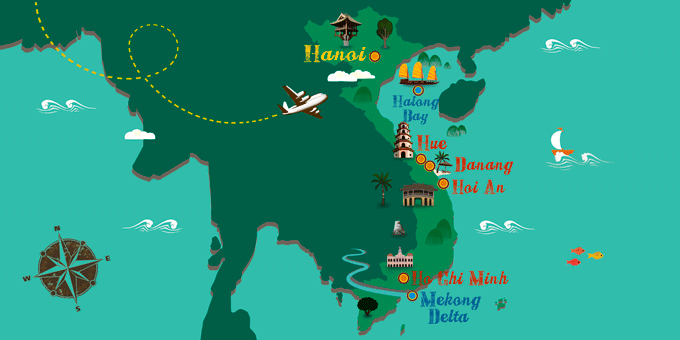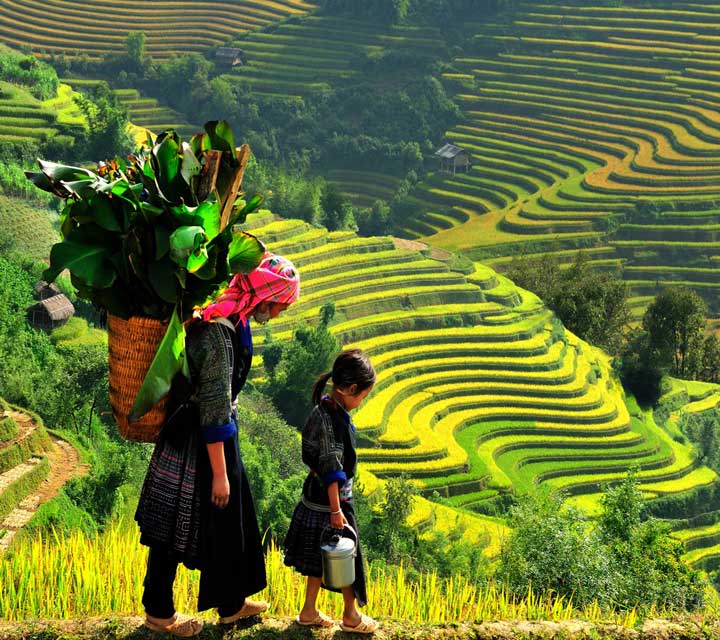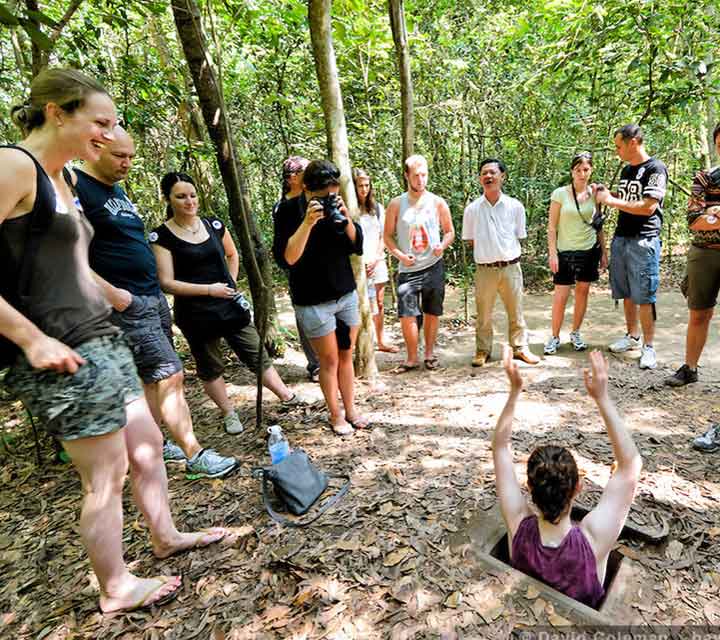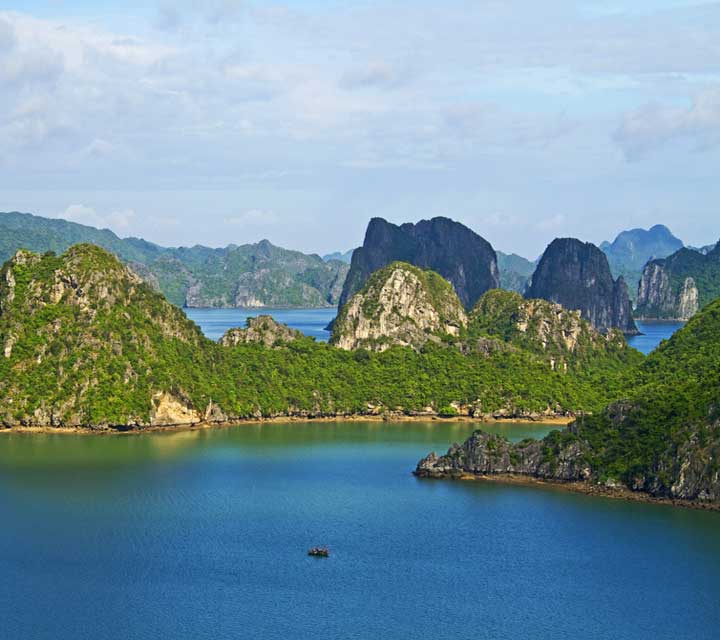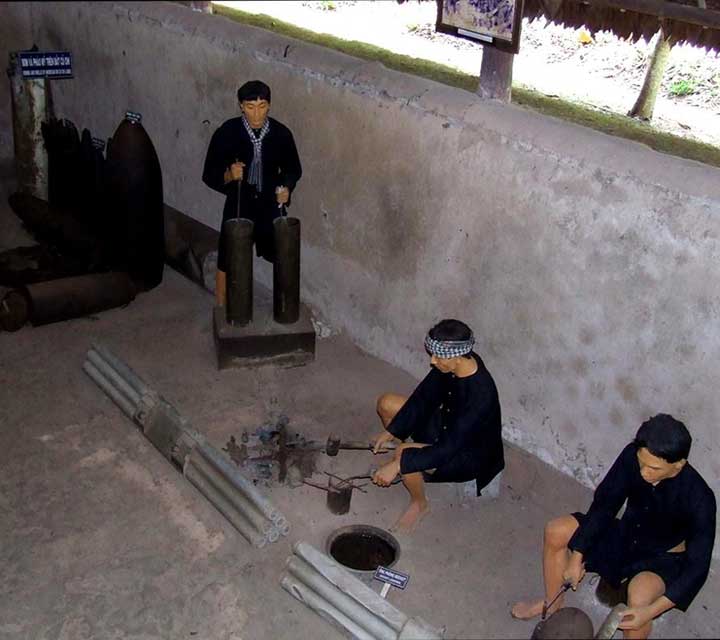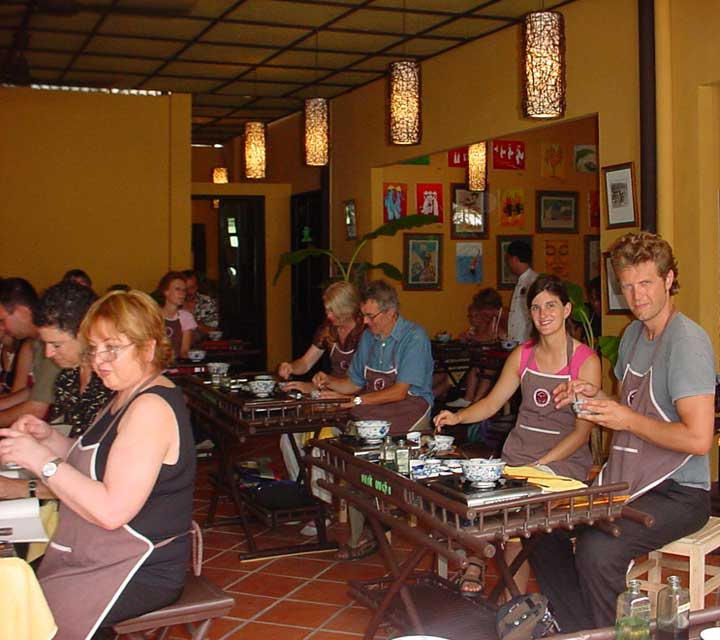Vietnam is one of Southeast Asia’s most beautiful countries, attracting travellers to its lush mountains, bustling cities and golden sand beaches. Despite rapid modernisation in Vietnam’s urban centres of Hanoi and Ho Chi Minh, time-honoured traditions remain intact amongst the locals. There are numerous ancient landmarks and colonial structures that have survived throughout the bumps and scrapes of history.
Buddhist shrines can be found next to towering skyscrapers, where you can experience vibrant festivals and ceremonies dating back hundreds of years. Long, sandy beaches are home to luxurious resorts and fine-dining venues, making them ideal romantic getaways, while expansive rice terraces on the hills make for excellent hiking excursions. Whether you’re planning a historical tour of Hanoi and Ho Chi Minh, a relaxing beach break or simply want to escape the bustling city life, our Vietnam travel guide caters to just about any holiday preference.
Population: 90.5 million
Capital City: Hanoi (6.5 million)
People: 53 ethnic minorities
Language: Vietnamese
Currency: Vietnam Dong (VND)
Time Zone: GMT +7 Hours
International Dialing Code: +84
- Passport and visa
Passports should be valid for six months from the date of entry into Vietnam. We recommend you make a photocopy of your passport and keep it somewhere separate, or scan it and keep it in an accessible email account.
Visitors must have a visa before entering Vietnam, and a visa on arrival can only be obtained with a letter of approval. A visa on arrival is granted to many nationalities for stays 15 days or less. Asia Travel Links can arrange this for you. Otherwise, you must apply online or at the embassy for all 30-90 day single or multiple entry visas. - Phones & Internet service
The Vietnamese postal service is reliable and there are also courier services widely available. Do not put postcards into letter boxes; give them to your hotel to post or go to a post office.
Telephone connections to the rest of the world are widely available, however they aren’t cheap. A Vietnamese SIM card is a less expensive way of calling other countries. However, your phone will need to be unlocked in order for it to work. 200,000VND ($10) worth of phone credit can last for up to 45 minutes to the UK.
Internet access is available in all major hotels and WiFi can be found in most cafes in developed areas.
- Weather
Vietnam’s vast and lengthy terrain has a diverse regional climate, making it difficult to specify a ‘perfect’ time to visit. Instead, it provides good flexibility for any itinerary.
In the north of Vietnam, from April to October, temperatures can reach up to 38°C with occasional bursts of heavy rain from July onwards during the rainy season. Winter is from December to March. The weather is damp and overcast and temperatures drop as low as 10°C, so be sure to pack a sweater! The best time to visit sights of the North such as Sapa and Hanoi is between September through December.
Generally sunny year round, the climate in the central region is more consistent. Visiting Hue, Hoi An or Da Nang can be lovely any time of year. However, be wary of autumn as cooler temperatures do usher in from September till December, and occasional typhoons bring heavy rains.
In the south, it is generally hot year round, with the dry season running from December to June. The wet season lasts from July to November and is hot and humid with short, heavy bouts of rain. The ideal season to see Ho Chi Minh City and the Mekong Delta is from December until March when temperatures are more mild. Vietnam’s weather can be unpredictable, so it may be a good idea to carry an umbrella or raincoat with you. You can purchase these from most supermarkets and general stores. - Festivals and National Holidays
The Vietnamese Lunar New Year, or Tet, is the most important time of the year in Vietnam. To celebrate, most Vietnamese return to their hometowns to visit relatives, exchange gifts and li xi, or “lucky money”, take part in family feasts and hold traditional ceremonies. For visitors, the lead up to Tet is a visual collage of vibrant traditions, exotic foods and festive markets. Locals flock to banh chung stalls for cakes made of glutinous rice, pork, fermented bean paste rolled with banana leaf. Street markets overflow with elegant lanterns and calligraphy. Brave motorcyclists can also been seen balancing pots of bright peach blossoms or ornamental kumquat trees as they zip through the traffic. Tet generally lasts three days, taking place at the end of January or the beginning of February, and usually coincides with a public holiday. Asia Travel Links can advise you on how this may affect your travel plans in Vietnam.
The Mid-Autumn Festival is another exciting and bustling time to visit Vietnam. Generally considered a festival for Vietnam’s children, it also has ties to ancient myths and legends. Large swathes of Hanoi’s Old Quarter, and popular areas in big cities throughout the country, become closed to traffic and are, instead, dedicated to lion dancing and night markets selling decorative masks and toys. Delicious moon cakes are sold in sweet and savoury varieties that can take up to 3 months to make. The Mid-Autumn Festival is held on different dates every year in September.
Other important holidays include:
Liberation of Saigon: 30 April
International Worker’s Day: 1 May
Hung King’s memorial day: 10 March (lunar calendar)
Vietnamese National Day: 2 September
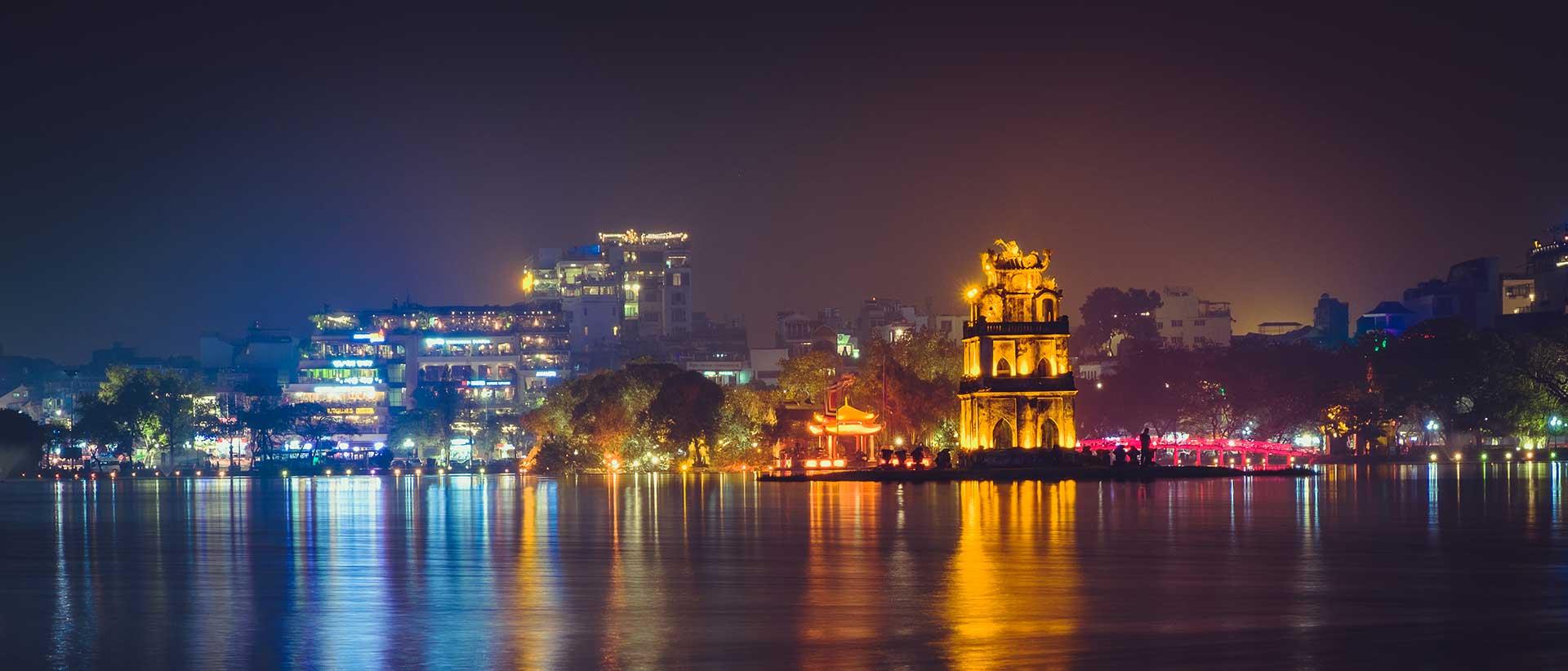
Hanoi
Known as a progressive city, Hanoi is a ‘’hub’’ for multiple diversified day tours and perhaps has innumerable activities than any cities of Indochina. From basic to world-class ranked hotels, high-end restaurants...

Ho Chi Minh
Ho Chi Minh City is the most populous city and the important center of economy, culture and education in Vietnam. On the basis of the existing urban area, Ho Chi Minh City is the Vietnam's largest urban
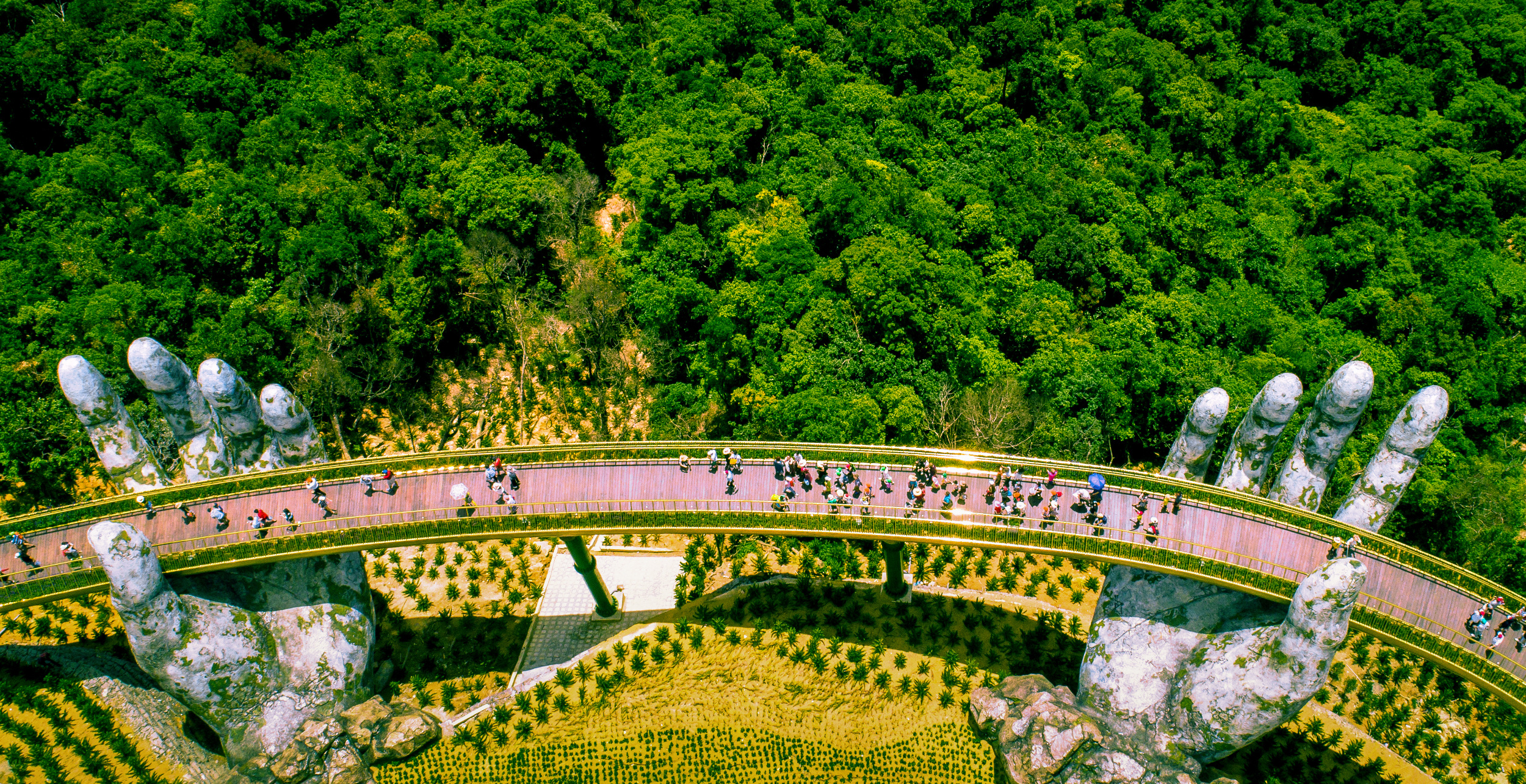
Da Nang
Da Nang is the fourth largest city in Vietnam. Apart from some shopping highlights and historical sights, the main reason for most travellers staying here is its proximity to the well-known My Khe Beach, Lang Co Beach, Hoi An and My Son.

Hoi An
Hoi An Town is an exceptionally well-preserved example of a Southeast Asian trading port dating from the 15th to the 19th century. Its buildings and its street plan reflect the influences, both indigenous and foreign, that have combined to produce this unique heritage site.
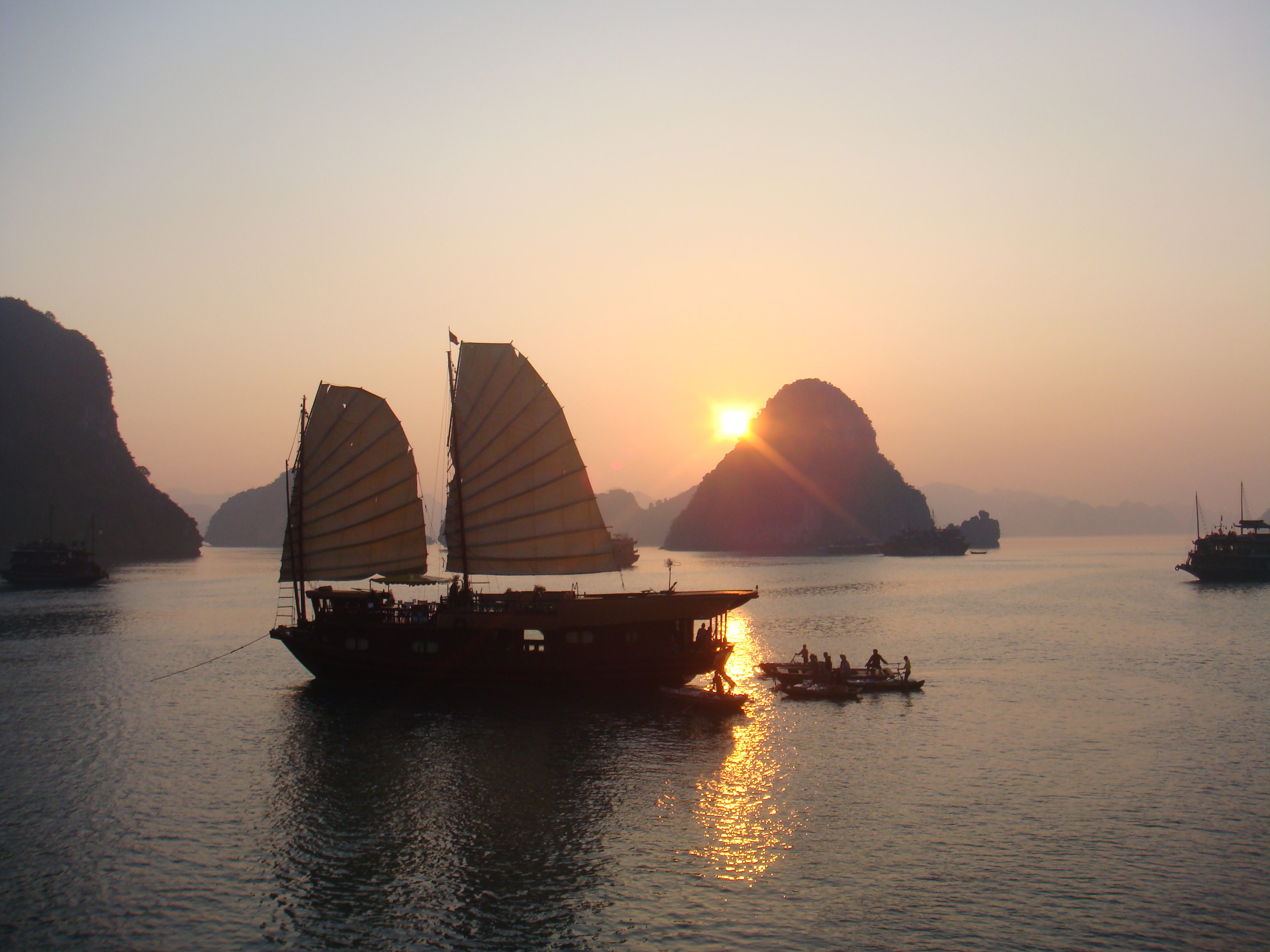
Halong
When Ha Long Bay was recognised as world nature heritage by UNESCO in 1994, people in Ha Long city and Quang Ninh Province imagined a bright future for their homeland’s tourism industry. Each year, the city started to see millions of tourists from all over the world, but very few actually stayed in Ha Long City.

Sapa
Being different with the other of Vietnam, Sapa belongs to the subtropical and temperate Zone. For this reason, there are four typical climates here in only one day. It is similar to the spring in early morning, more sun light and quite hot in the afternoon, cool and comfortable in the evening, and gets a little cold at night.

Hue city
Besides antique sites, Hue also offers some exquisite beaches like Lang Co and Thuan An. A few mineral hot springs available are My An and Thanh Tan. Hue deserves at least a couple of days to visit.
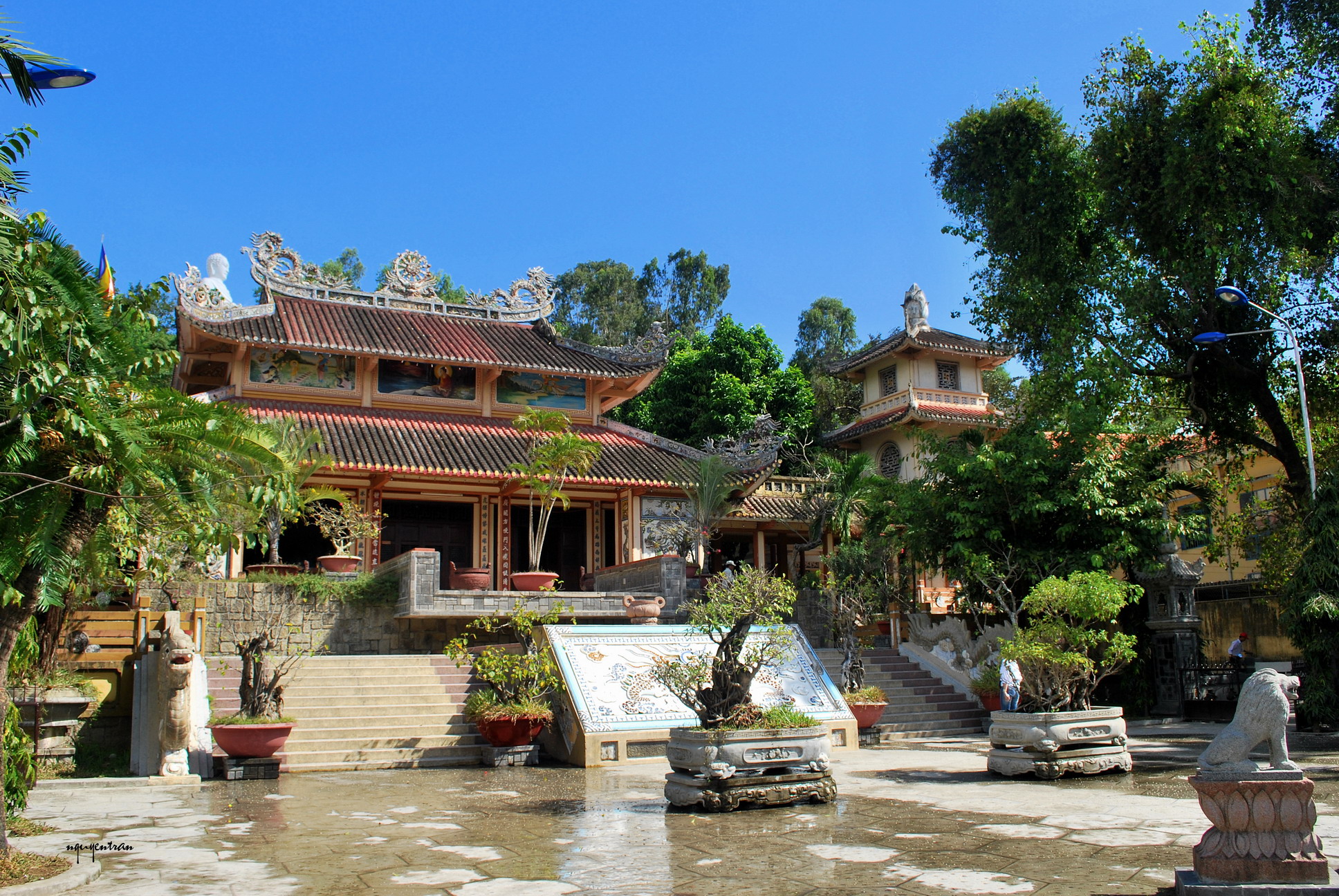
Nha Trang
Being the home to one of the most beautiful beach of the country, Nha Trang has its name known to the world. Vinpearl land, considered the pearl of the ocean queen’s crown, offering a marvelous scene and excellent services.
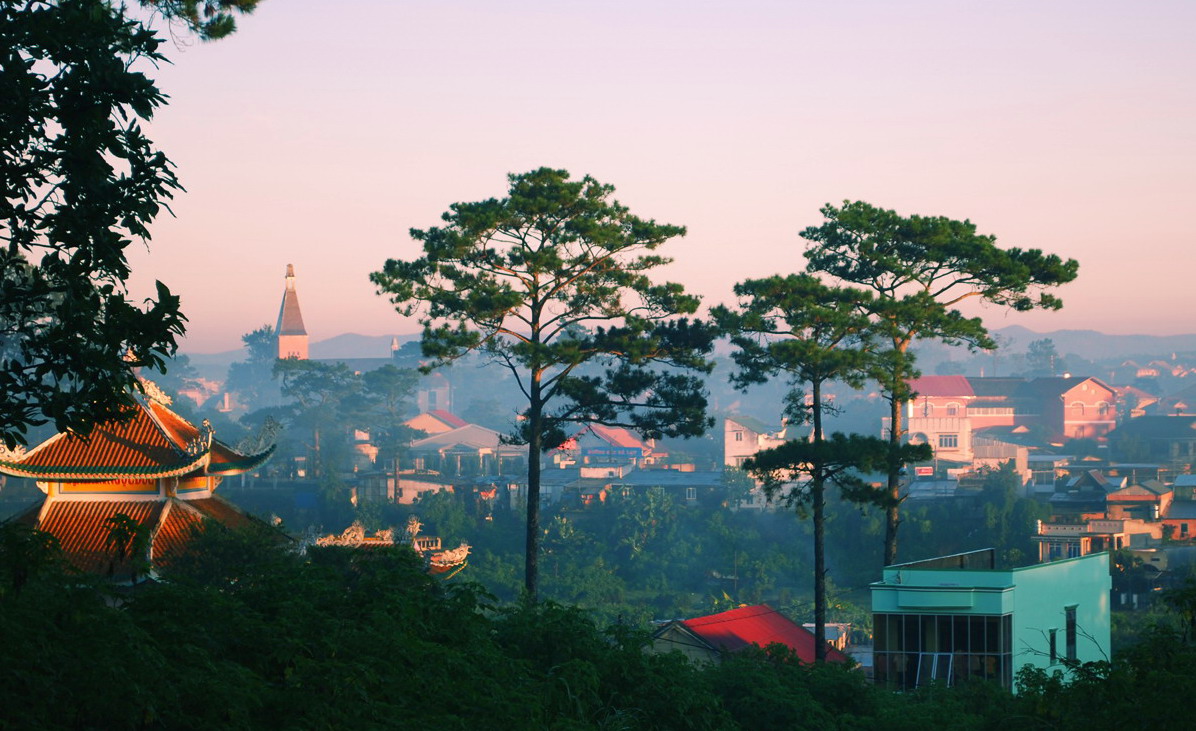
Da Lat
For foreign visitors, the moderate climate has made Dalat the adventure-sports capital of southern Vietnam, with canyoning, mountain biking, white-water rafting and treks into the surrounding hills all available.
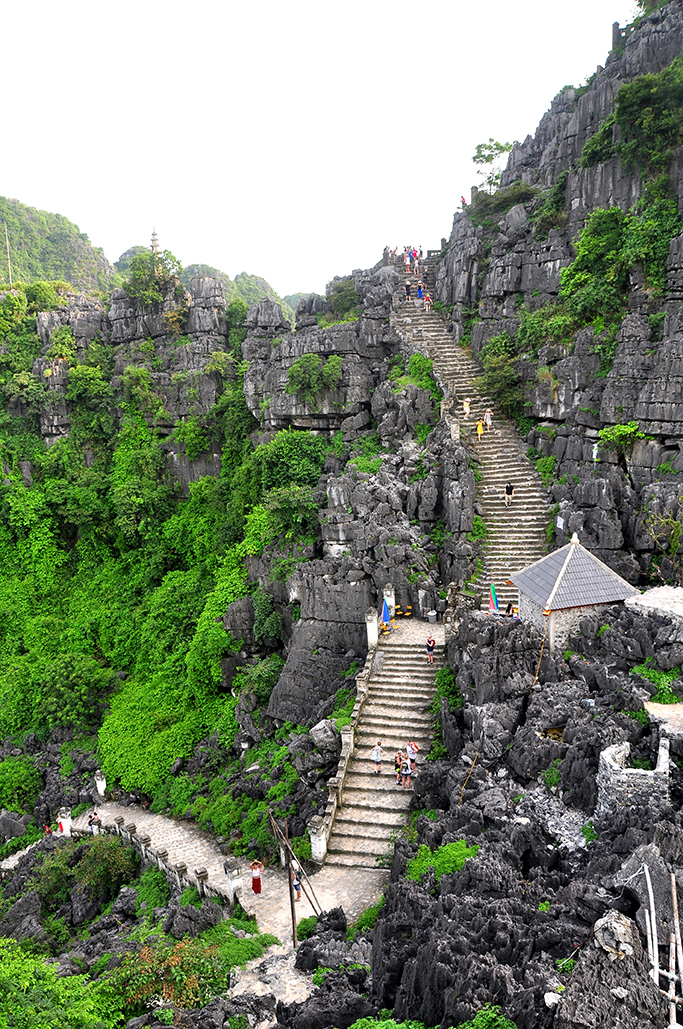
Ninh Binh
Ninh Binh province is blessed with natural beauty, cultural sights and the Cuc Phuong National Park. Highlights include boat trips amid karst landscapes at Tam Coc and the Unesco World Heritage-listed Trang An Grottoes.
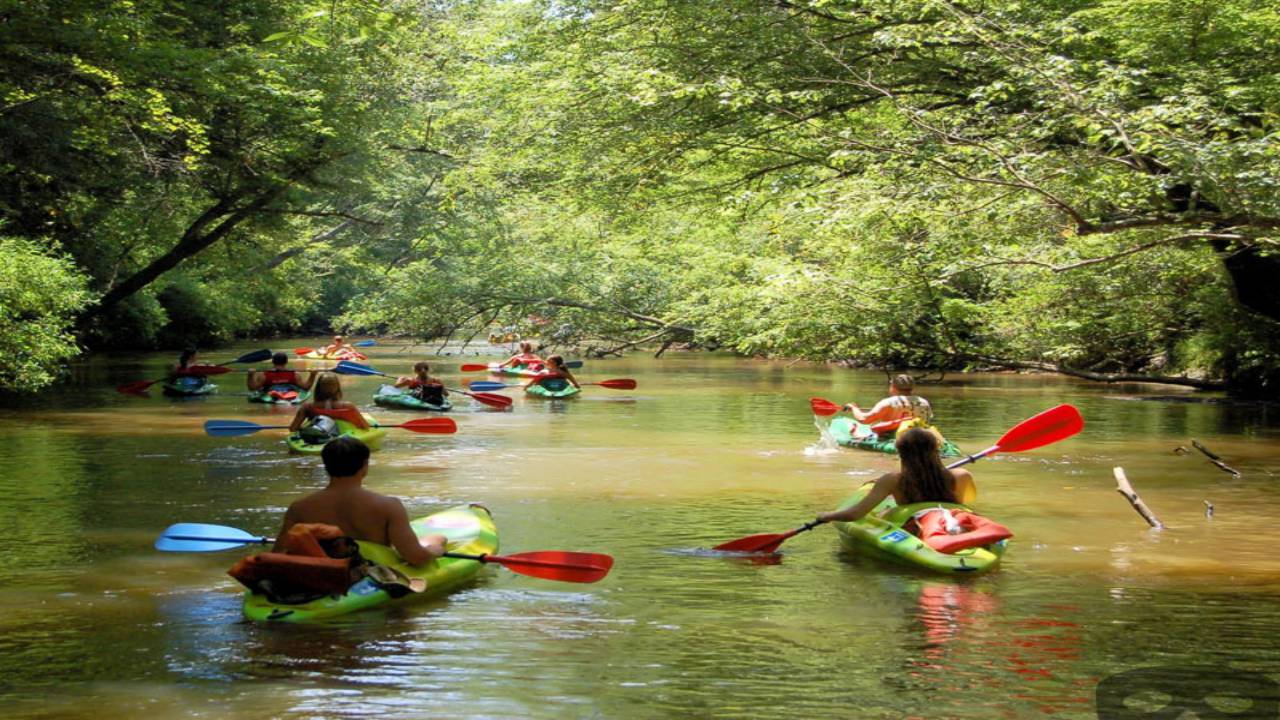
Phu Quoc Island
Phu Quoc Island boasts idyllic beaches, romantic sunsets, evergreen forests, and a serene atmosphere, making it an ideal holiday destination for travellers looking to escape bustling city life.
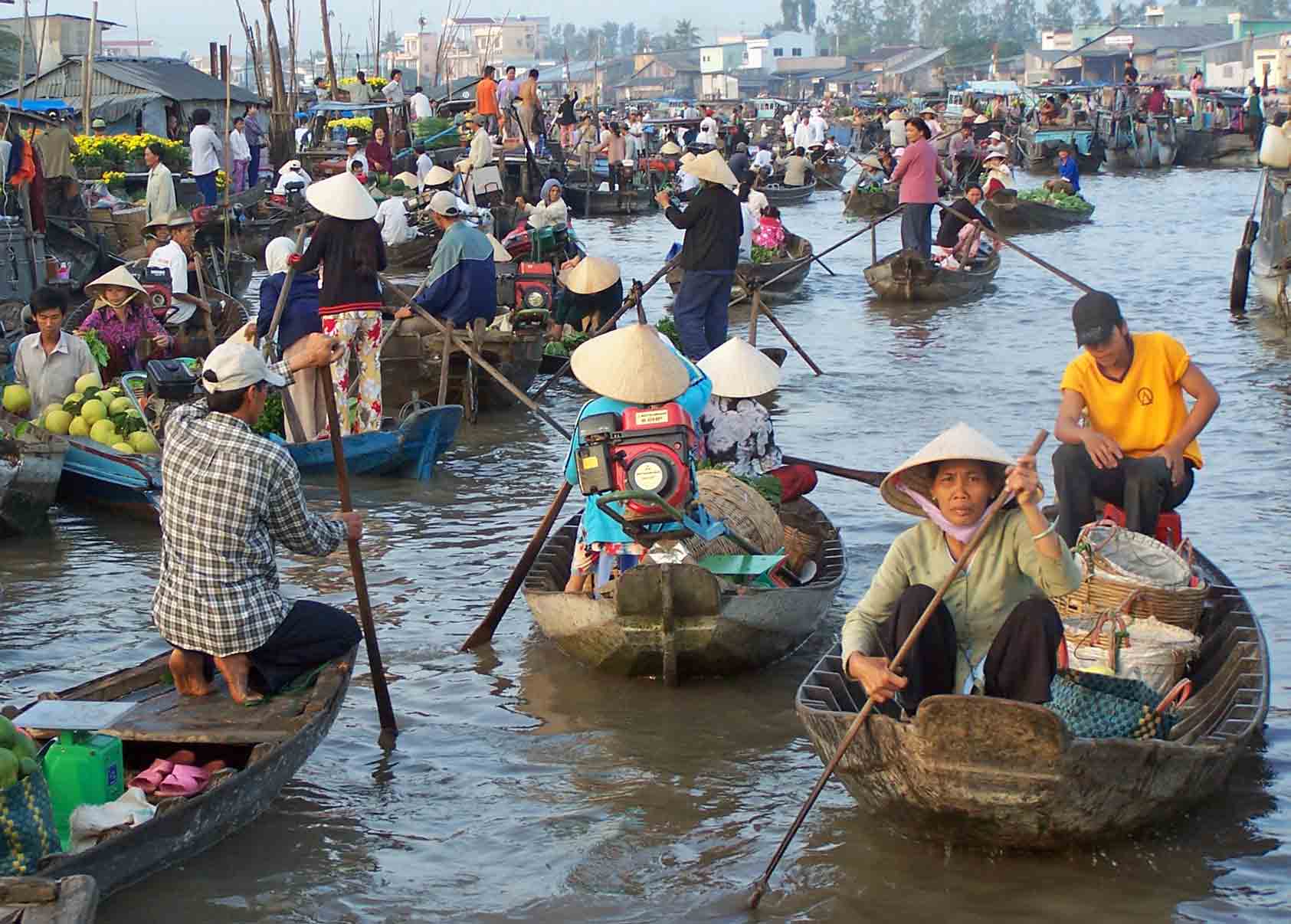
Mekong Delta
It's a water world that moves to the rhythms of the mighty Mekong, where boats, houses and markets float upon the innumerable rivers, canals and streams that criss-cross the landscape like arteries.
Hai Phong
Hai Phong is a large city with an important seaport of Vietnam. Hai Phong is near Quang Ninh Province to the north, Hai Duong Province to the west, and Thai Binh Province to the south. Because of the proximity to the East Sea, Hai Phong's weather is affected by inter-tropical monsoons. The annual average temperature varies between 23ºC and 24ºC.
Cat Ba Island
Rugged, craggy and jungle-clad Cat Ba, the largest island in Halong Bay, has experienced a tourism surge in recent years. The central hub of Cat Ba Town is now framed by a chain of low-rise concrete hotels along its once-lovely bay, but the rest of the island is largely untouched and as wild as ever. With idyllic Lan Ha Bay just offshore, you'll soon overlook Cat Ba Town's overdevelopment.
Hoa Binh
Hoa Binh province is known to be an origin of “Hoa Binh culture” - the cradle of Vietnamese ancient culture. Besides, tourist and humanity resources are diversified, plentiful and attractive with 184 historic sites, cultural sites and natural landscapes together with unparalleled cultures of ethnic groups like Muong, Thai, Mong, Tay and Dao expressed in building architectures, beliefs, customs and traditional festivals.
Vung Tau
Vũng Tàu is a port city and the capital of Bà Rịa-Vũng Tàu Province, on a peninsula in southern Vietnam. Once a French colonial town, it’s now a popular seaside resort that draws many visitors from Ho Chi Minh City, who arrive by hydrofoil. Its long, busy stretch of sandy coast, including Front Beach and Pineapple Beach, has the verdant Small Mountain and Big Mountain as backdrop.
Mui Ne
Mũi Né is a coastal fishing town in the south-central Bình Thuan Province of Vietnam. The town, with approximately 25,000 residents, is a ward of the city of Phan Thiết. Mui Ne and the other wards of Phan Thiet stretch along the coast for approximately 50 kilometers and have been transformed into a resort destination since the mid 1990s, when many visited the area to view the solar eclipse of October 24, 1995. Most notably, tourism has developed in the area from the Phan Thiet city center to Mui Ne, which has more than a hundred beach resorts, as well as restaurants, bars, shops and cafes.
